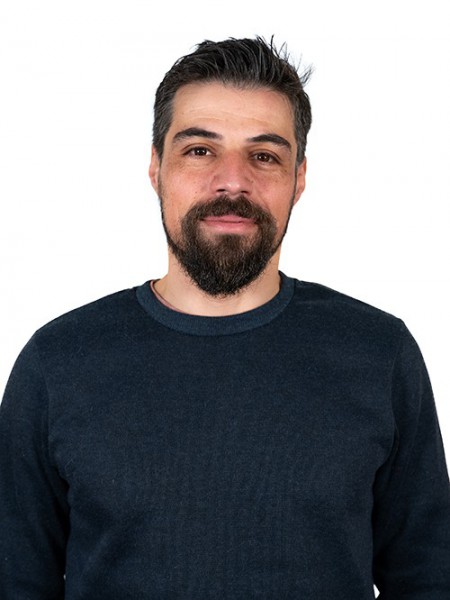resumo
The impact of fullerene side chain functionalization with thiophene and carbazole groups on the device properties of bulk-heterojunction polymer:fullerene solar cells is discussed through a systematic investigation of material blends consisting of the conjugated polymer poly[(5,6-difluoro-2,1,3-benzothiadiazol-4,7-diyl)-alt-(3,3'-di(2-octyldodecyl)-2,2 ' ;5 ' ,2 '' ;5 '' ,2'-quaterthiophen-5,5'-diyl)] (PffBT4T-2OD) as donor and C-60 or C-70 fulleropyrrolidines as acceptors. The photovoltaic performance clearly depended on the molecular structure of the fulleropyrrolidine substituents although no direct correlation with the surface morphology of the photoactive layer, as determined by atomic force microscopy, could be established. Although some fulleropyrrolidines possess favorable lowest unoccupied molecular orbital levels, when compared to the standard PC71BM, they originated OPV cells with inferior efficiencies than PC71BM-based reference cells. Fulleropyrrolidines based on C-60 produced, in general, better devices than those based on C-70, and we attribute this observation to the detrimental effect of the structural and energetic disorder that is present in the regioisomer mixtures of C-70-based fullerenes, but absent in the C-60-based fullerenes. These results provide new additional knowledge on the effect of the fullerene functionalization on the efficiency of organic solar cells.
palavras-chave
OPEN-CIRCUIT VOLTAGE; ORGANIC PHOTOVOLTAIC CELLS; FULLERENE DERIVATIVES; ELECTRON-ACCEPTORS; CHARGE SEPARATION; POLYMER; PERFORMANCE; EFFICIENT; PCBM; MORPHOLOGY
categoria
Materials Science
autores
Gaspar, H; Figueira, F; Strutynski, K; Melle-Franco, M; Ivanou, D; Tome, JPC; Pereira, CM; Pereira, L; Mendes, A; Viana, JC; Bernardo, G
nossos autores
agradecimentos
This work was financially supported by: Base Funding-UIDB/00511/2020 of the Laboratory for Process Engineering, Environment, Biotechnology and Energy-LEPABE-funded by national funds through the FCT/MCTES (PIDDAC). This work was partially funded within the scope of the project i3N, UIDB/50025/2020 & UIDP/50025/2020, financed by national funds through the FCT/MEC. Thanks are also due to FCT/MEC for the financial support to QOPNA (FCT UID/QUI/00062/2019), CICECO-Aveiro Institute of Materials (UIDB/50011/2020 & UIDP/50011/2020), CQE (FCT UIDB/00100/2020), and CIQUP (FCT UID/QUI/UI0081/2019) research units, through national funds and where applicable co-financed by the FEDER, within the PT2020 Partnership Agreement. H.G. thanks Fundacao para a Ciencia e a Tecnologia (FCT) for his PhD scholarship (SFRH/BD/103009/2014). The research contracts of F.F. (REF. -168-89-ARH/2018) is funded by national funds (OE), through FCT-Fundacao para a Ciencia e Tecnologia, I.P., in the scope of the framework contract foreseen in the numbers 4, 5, and 6 of article 23, of the Decree-Law 57/2016, of August 29, changed by Law 57/2017, of July 19. M.M.F. acknowledges also support from FCT under the project IF/00894/2015.




